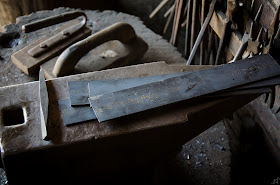It seems like an incredibly long time ago now that I stood at the top of the fabled 'Stairway to Heaven' nearly three months past. As with all things, the experience comes and goes and the pictures superpose memory.
In the early hours of dawn, we set out to catch sunrise at the summit. Arguably, we took an admirable go about it but ultimately fell short by an hour or two. Not knowing the way or even where to begin, the first moments echoed everything we saw on the internet regarding the ascent. From the north, the stairs themselves are very illegal due to the state of decay that grew upon the since their use in World War II as a pathway to a secret radio network. From the south, the trail itself is not necessarily illegal, depending on how you go about it. At nearly three in the morning, we thought it would be a safe venture. To our education, there is no end to the tenacity of disgruntled neighbours. Within less than five minutes of coming to the trailhead, we were joined by another pair of hikers and, even shorter thereafter, the police.
Sympathetic to our good nature and general disposition that must have been contrary to the other sorts of blokes who frequent the area for early morning adventures, they seemed relieved that they would not have to detain anyone. Even better, a minute after they arrived, they jumped back into their cars and took off to the background noise of a radio squelching someone's stolen vehicle. As soon as that, they were gone (and so were we).
The trial itself snaked its way across the valley between ridgelines for a handful of miles before taking a great leap upward and through the bristling slopes of O'ahu. That it was still dark served as a testament of how laborious the process was; stars themselves over the edge of the horizon seemed to sweat in the fall of early dawn. That mist which lingers in all cool places which know a striking heat to the day blanketed the cloudforest and, as we scrambled our way higher, grew subsequently thinner.
After a time, the first light of dawn broke over the eastern mountains and cascaded the world in a brilliantly green light. The light, it turns out, of billions of living things drinking it in at the very first opportunity. Seeing the scale of the canyons and the lushness of the slopes in spite of their offensive steepness was breathtaking. Or maybe it was the general ascent. In either case, the shedding of night's veil was a welcome relief even though we knew we would not reach the tower in time for true sunrise.
Eventually, the old radio tower appeared on a distant peak. Another good mile or so of twisting, muddy trail lay between us and it yet the end was near. All along the upper pass, a series of precarious ropes dangled on the slick mud faces for hikers to climb. More often than not, the top of the rope was hidden around a bend or so far overhead that it disappeared in the sheerness of the slope. More often than not, it looked like a better idea to not use it. Until trying. Thankfully, they all held to their purpose and everyone returned safely.
It was around this point in the hike that we realised the severity of how much the islanders did not want anyone climbing the stairs themselves. Out of the fog, we heard the sound of a helicopter on the north side of the trail which holds the entire length of the stairs. As it turns out, they were surveying the stairs for anyone who managed to sneak past the security stationed everywhere withing creeping distance of the entrance.
In the end we were, as some old nefarious vandal noted, 'On Top'. The tower itself was a neat combination of derelict history and waystation to rest. A sizeable congregation of hikers and campers (who slept inside it) waited there for the morning and so we joined their ranks and looked down over the stairs. A quarter mile down or so held the iconic scenery where the stairs descend at a frighteningly steep angle and the rising mist obscures the world below.
From above, it looks almost like a miniature model but in reality plummets a few thousands of feet down to the lowlands and the ocean.
Down the back side lay a collection of ruins which once housed other communications stations and outbuildings for the radio tower. Along the stairs in the brush, a pair of thick cables runs parallel to the ridgeline where the nation's most secret of secrets once travelled. In a sense it is remarkable how simple and how resilient the way has become. While a good portion of it is in severe disrepair and wholly not recommended for casual travel, the nature of it is supremely interesting. When coupled with the views, I am considerably glad and fortunate to have walked a part of the stairs before they are either removed or some more serious effort is taken to prevent expeditioners from pursuing them.
And, of course, I was compelled to find the US Geodetic Survey marker at the summit, an old habit from my long days in the mountains in the east.
Happy trails!




























































